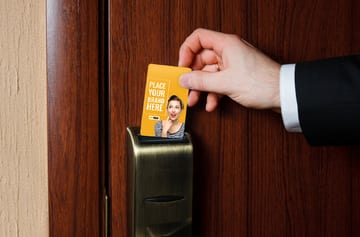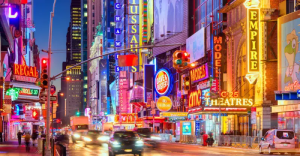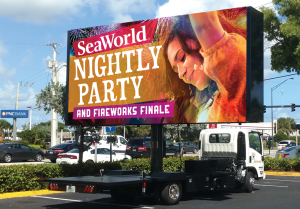In a saturated loyalty landscape, the key benefits card remains one of the most powerful tools for cultivating long-term customer relationships. But in 2025, simply handing out a generic plastic card won’t cut it.
Modern consumers expect personalization—and smart marketers know that key card advertising is more effective when tailored to the individual. The key lies in using data to transform static rewards into dynamic, value-driven experiences.
In this blog, we’ll explore how to personalize your key benefits card strategy to boost engagement, increase ROI, and enhance the overall customer journey. We’ll also dive into how key cards ads fit into a larger omnichannel marketing ecosystem.
Key Benefits Card: Why Personalization Is No Longer Optional
Generic rewards programs may generate enrollment, but they often fail to foster true loyalty. In contrast, a personalized key benefits card program:
Increases usage frequency
Boosts cross-sell and upsell potential
Strengthens brand affinity
Delivers measurable marketing impact
And let’s be clear: personalization isn’t just about adding a first name. It’s about customizing the value of the experience based on real behaviors, preferences, and motivations.
Whether you’re managing hotel key card ads, retail rewards, or healthcare incentive programs, personalization matters.
Personalization Strategies That Elevate Your Key Benefits Card Program
Segment Your Audience by Behavior, Not Just Demographics
The most effective key card advertising campaigns use segmentation based on:
Purchase frequency
Preferred product categories
Time of day of visits
Average transaction value
Example: A hotel guest who books on weekends for leisure trips should receive a different key card ad than a business traveler checking in midweek.
By segmenting your user base into high-intent personas, you can design key cards ads that feel relevant and compelling—not cookie-cutter.
Use Dynamic Printing to Personalize Physical Key Cards
Thanks to advancements in print technology, brands can now produce key benefits cards that reflect real-time data.
You can personalize:
Offers based on past purchases
QR codes linked to custom landing pages
Expiration dates that reflect user activity
For example, a key card ad might feature a “$10 off your next visit” offer for an inactive customer, while a loyal user sees an invitation to an exclusive preview event.
This transforms a basic card into a direct-response vehicle.
Integrate Key Benefits Cards with Mobile App Behavior
Your mobile app is a data goldmine. By syncing it with your key benefits card, you can tailor:
Push notifications
In-app messages
Digital key card ads
Example: A pharmacy app might detect when a user refills a prescription and send a thank-you message with a coupon—triggered by the key benefits card number.
This type of micro-moment marketing enhances brand perception and increases utility.
Create Tiered Benefits Based on Usage Patterns
Move beyond “one card fits all.” Segment your key benefits card users into tiers (e.g., bronze, silver, gold) based on actions—not just spend.
Reward behaviors like:
Referrals
App check-ins
Engagement with promotions
These gamified experiences add emotional incentive and increase the visibility of your key card ads through social shares and in-store buzz.
How Key Cards Ads Fit Into Your Larger Personalization Strategy
Your physical key benefits card is just one piece of the puzzle. Personalized key card advertising should integrate with:
✔ In-Hand Media
Place key card ads on hotel room keys, pharmacy bags, or event passes. These deliver your message directly into the user’s hand—personal, local, and tangible.
✔ Digital Campaigns
Track online behaviors tied to key benefits card usage and retarget with ads across social, email, or SMS.
✔ Loyalty Portals
When users log into your rewards portal, show content, offers, and promotions that align with their profile.
When done right, key cards ads don’t interrupt—they enhance the experience.
Metrics That Matter: Measuring the Impact of Personalization
To evaluate the effectiveness of your personalized key benefits card strategy, track:
Activation rate (how many recipients start using the card)
Redemption rate of key card ads
Average spend per user (pre- and post-personalization)
Loyalty program churn
Cross-channel engagement (app, in-store, email)
A well-personalized key benefits card program will show consistent lift across these metrics.
Case Study: How a Pharmacy Brand Used Personalization to Increase Card Engagement by 42%
A regional pharmacy chain launched a key benefits card program using the following approach:
QR codes personalized to each customer’s medication type
Custom messaging based on past refills and flu shot history
In-hand key card ads placed in pharmacy bags
Within 90 days:
Program participation increased by 42%
Email open rates tied to key benefits card promotions rose 60%
Repeat purchase rate improved by 33%
This illustrates how personalized key card advertising can turn a passive card into an active engagement tool.
Final Thoughts: Key Benefits Card Personalization Isn’t the Future—It’s Now
Consumers have grown accustomed to personalized experiences from Netflix, Amazon, and Spotify. They expect the same from your key benefits card.
If your program still treats all users the same, you’re not just missing an opportunity—you’re falling behind.
With the right blend of behavior-based segmentation, dynamic messaging, and integrated key card advertising, you can turn loyalty cards into loyalty engines—fueling both customer satisfaction and long-term ROI.






